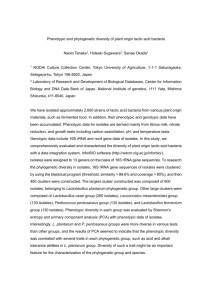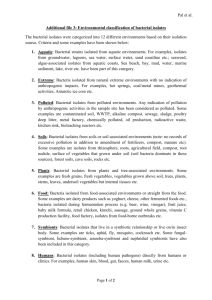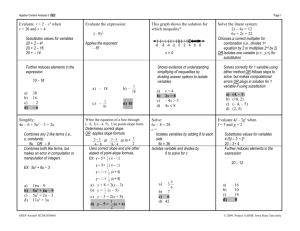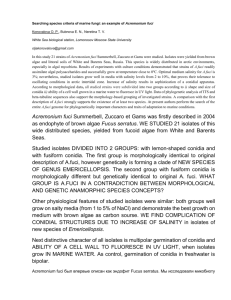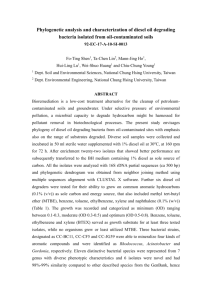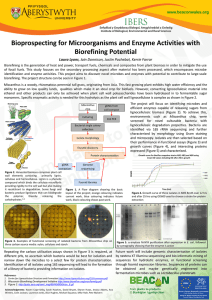Genotypic and phenotypic variation in Cylindrocladium
advertisement
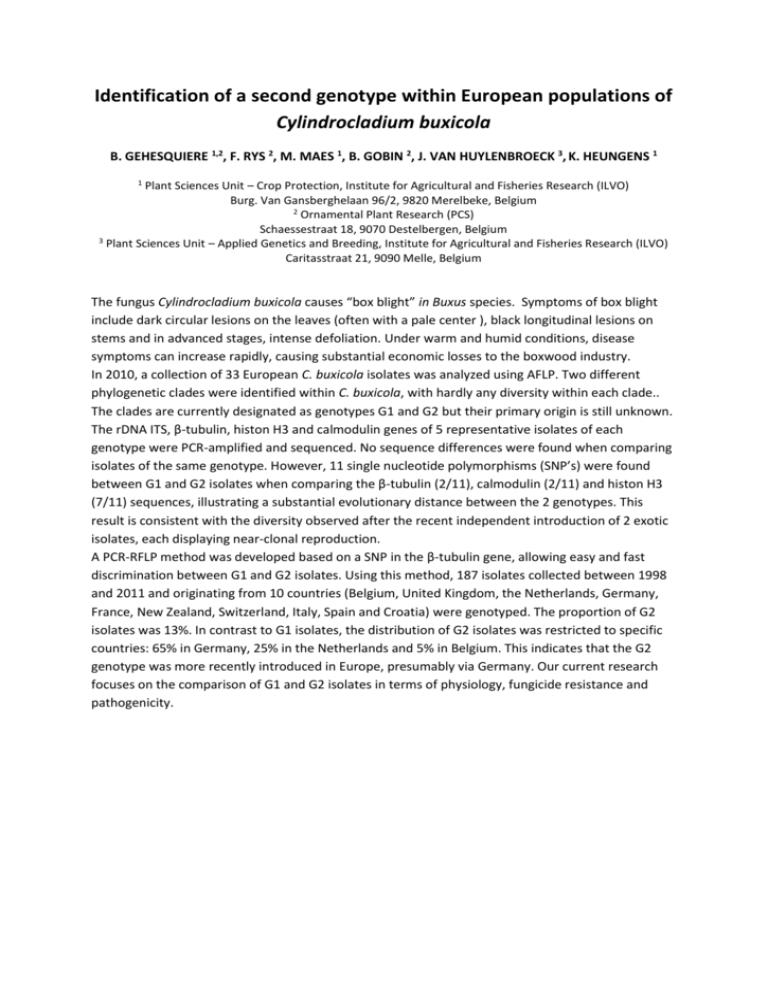
Identification of a second genotype within European populations of Cylindrocladium buxicola B. GEHESQUIERE 1,2, F. RYS 2, M. MAES 1, B. GOBIN 2, J. VAN HUYLENBROECK 3, K. HEUNGENS 1 1 Plant Sciences Unit – Crop Protection, Institute for Agricultural and Fisheries Research (ILVO) Burg. Van Gansberghelaan 96/2, 9820 Merelbeke, Belgium 2 Ornamental Plant Research (PCS) Schaessestraat 18, 9070 Destelbergen, Belgium 3 Plant Sciences Unit – Applied Genetics and Breeding, Institute for Agricultural and Fisheries Research (ILVO) Caritasstraat 21, 9090 Melle, Belgium The fungus Cylindrocladium buxicola causes “box blight” in Buxus species. Symptoms of box blight include dark circular lesions on the leaves (often with a pale center ), black longitudinal lesions on stems and in advanced stages, intense defoliation. Under warm and humid conditions, disease symptoms can increase rapidly, causing substantial economic losses to the boxwood industry. In 2010, a collection of 33 European C. buxicola isolates was analyzed using AFLP. Two different phylogenetic clades were identified within C. buxicola, with hardly any diversity within each clade.. The clades are currently designated as genotypes G1 and G2 but their primary origin is still unknown. The rDNA ITS, β-tubulin, histon H3 and calmodulin genes of 5 representative isolates of each genotype were PCR-amplified and sequenced. No sequence differences were found when comparing isolates of the same genotype. However, 11 single nucleotide polymorphisms (SNP’s) were found between G1 and G2 isolates when comparing the β-tubulin (2/11), calmodulin (2/11) and histon H3 (7/11) sequences, illustrating a substantial evolutionary distance between the 2 genotypes. This result is consistent with the diversity observed after the recent independent introduction of 2 exotic isolates, each displaying near-clonal reproduction. A PCR-RFLP method was developed based on a SNP in the β-tubulin gene, allowing easy and fast discrimination between G1 and G2 isolates. Using this method, 187 isolates collected between 1998 and 2011 and originating from 10 countries (Belgium, United Kingdom, the Netherlands, Germany, France, New Zealand, Switzerland, Italy, Spain and Croatia) were genotyped. The proportion of G2 isolates was 13%. In contrast to G1 isolates, the distribution of G2 isolates was restricted to specific countries: 65% in Germany, 25% in the Netherlands and 5% in Belgium. This indicates that the G2 genotype was more recently introduced in Europe, presumably via Germany. Our current research focuses on the comparison of G1 and G2 isolates in terms of physiology, fungicide resistance and pathogenicity.





